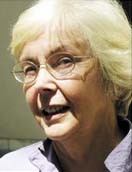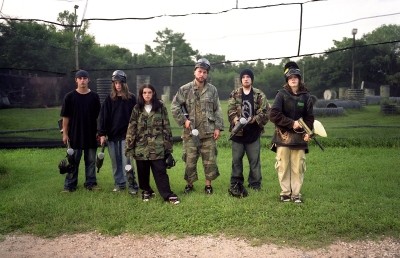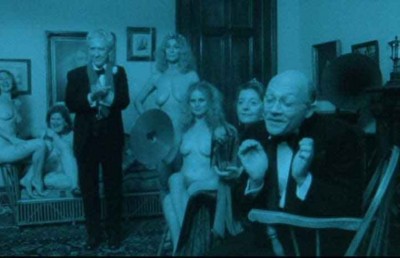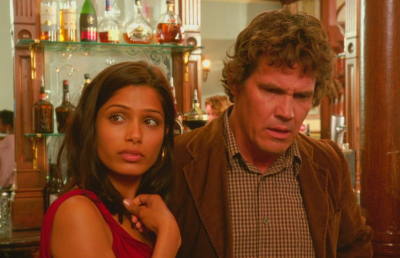Verities: the 2011 Berlinale
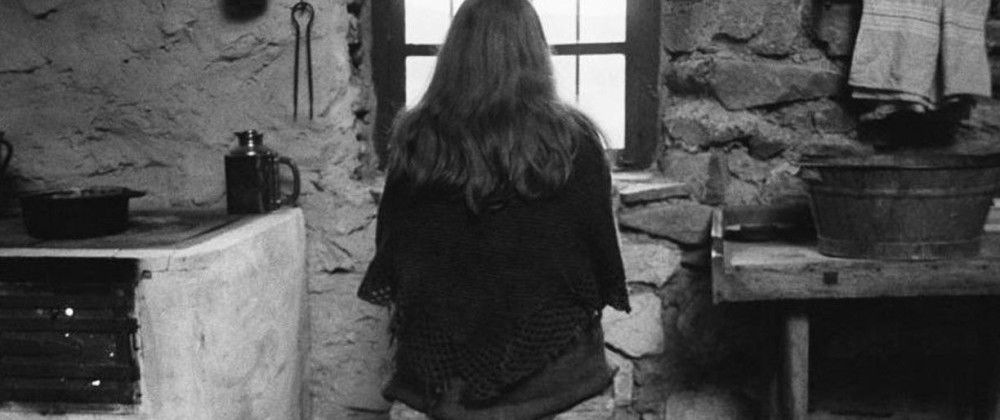
“Mothers is about the nature of truth” is the way Milcho Manchevski described his new film at this year’s Berlinale. “One of the key concerns is the way in which reality is recorded and manipulated.” Manchevski’s thesis, which can be taken in a number of ways, can be applied not just to his own film but to several of the festival’s other offerings. Though ideas about filmic truth have begun to seem dated in an age of CGI and postmodern relativism, they remain surprisingly potent, as the Berlinale line-up amply demonstrated. Discourses centered around truth are most commonly associated with documentaries, which purport to show the world as it is. But the idea of truth also gets brought up in relation to the putative veracity of the photographic image itself. Siegfried Kracauer and André Bazin, among others, have championed this way of thinking about the movies. Other theorists have pointed to the way in which close-ups can illuminate an inner rather than outer truth. Still other common notions about the kinds of truths movies can examine refer to social and political verities. In all of these formulations, cinema is understood as a medium that, despite all of its artifices, is uniquely capable of representing truth in many of its guises.
Unhappily Mothers (Majki) does little to bring these ways of understanding filmic truth into clear focus. Screened as part of the Berlinale’s Panorama section, Manchevski’s film features several conceptions of truthfulness. The movie’s three unrelated stories all take place in the filmmaker’s native Macedonia. In the first, two little girls go to the police claiming to have been confronted by a flasher, though they have actually just heard about this man from one of their friends. Eventually, the girls’ lie lands an innocent person in a world of trouble. The girls don’t tell the truth, but their sin has little to do with the issue of discourses about cinematic truth. The film’s two subsequent stories, however, get at a more film-specific notion of truth. The second vignette follows a trio of documentarians who venture into a remote village in the scenic Macedonian mountains to investigate the reasons behind the depopulation of the region. As we observe their process doubts arise about truthfulness of what they come up with. In the movie’s third section Manchevski himself turns documentarian as he investigates a series of sensational murders that took place in Macedonia in 2008. These atrocities, in which elderly working-class women were victimized, appear to have been committed by a journalist who then wrote about the crimes. But Manchevski is far from definitive in ascribing blame; instead he emphasizes telling ambiguities and conflicting points of view. This final section breaks up into a mosaic of conflicting versions of what occurred to suggest that the true facts about what happened may never be known. Thus, though the film’s first story is unrelated to the others, the last two sections taken together argue that documentarians should be wary about any claim they may want to make about telling the truth.
Though Mothers debunks the notion that documentaries can tell the truth, incorporating documentary elements into fiction films remains a venerable method of investing such productions with an aura of authenticity. Of the movies I saw at the 2011 Berlinale, The Forgiveness of Blood, directed by Joshua Marston, made the most compelling use of this technique. Screened as part of the fest’s main competition, The Forgiveness of Blood tells a tale about the tradition of blood feuds (called Kanun) in rural Albania. In contrast to Dossier K, another recent production about Kanun that featured name actors and a contrived thriller plot, The Forgiveness of Blood features mostly local non-professional performers and a script by Albanian-born Andamion Murtaj that grew out of extensive interviews with the inhabitants of the region. The story centers on neighbors who are embroiled in a squabble over land that boils over into murderous violence.
Marston’s quest to anchor the film’s plot in reality serves him well in some ways and hampers him in others. The young Albanians cast in the leading roles, Tristan Halilaj (Nik) and Sindi Lacej (Nik’s sister Rudina), play characters like themselves and hardly appear to be performing at all. Yet, as a few early reviewers pointed out, Marston’s desire to simulate actual conditions in this hidebound culture stalls the action when Nik is confined to his house for an indefinite period to avoid being killed in revenge and the plot grinds to a halt.
Despite all its attempts at authenticity, truth in The Forgiveness of Blood is in some ways as slippery a concept as in Mothers. Marston has claimed that the driving force behind Albania’s long tradition of Kanun is an idea of family honor which is all about male pride. And to be sure the men in both the feuding families come off as arrogant, pigheaded and sexist. Yet the film’s extensive agrarian imagery, captured by cinematographer Rob Hardy, suggests that land rights also weigh heavily in these quarrels. The action begins with a long shot of a horse-drawn buggy jogging through tilled fields. The buggy pauses as its driver, Nik’s father Mark (veteran Albanian actor Refet Abazi), casts aside barriers that block his route. This brief vignette sets the stage for the upcoming feud. Though the land Mark trespasses on had been in his family for generations, it went up for grabs during the turbulent times Albania suffered through following the Second World War. In all the turmoil, another family acquired the valuable fields. So how are we to judge the relative importance of land rights as opposed to machismo in perpetuating Kanun?
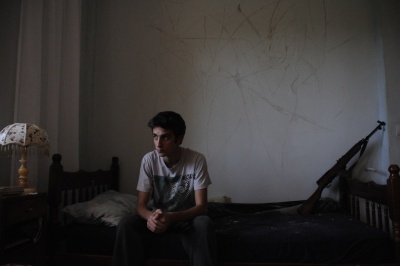
The Forgiveness of Blood
However ambiguous their thematic implications, the real-life settings featured in The Forgiveness of Blood lend credibility to what is going on. Pictures don’t lie, we believe—even in an era when the images we see on screen are routinely doctored. Another provocative film in the Berlinale’s main competition, Lipstikka, written and directed by Jonathan Sagall, plays with this assumption for dramatic effect, showing us contradictory versions of the same traumatic event filtered through the memories of the film’s two main characters, Lara (Clara Khoury) and Inam (Nataly Attiya). The women had been friends and sometime lovers in their Palestinian homeland. Now though, both live in London and have gone their separate ways. When Inam unexpectedly shows up on Lara’s doorstep (much to the latter’s consternation), long-buried memories well up which we share in through a series of extended flashbacks. One, featuring a nocturnal adventure the girls embarked on while still in Palestine, is shown in two versions that contradict each other.
Other movies, for example the classic Western The Man Who Shot Liberty Valance, have also exploited the shock effect of recycling a pivotal scene. But Lipstikka takes the device much further than Liberty Valance did by altering not just the angle of vision through which the action is seen but the action itself. In Liberty Valance the shootout scene we initially witness doesn’t lie; it just tells part of the truth. The subsequent flashback, which views the shootout from a more distant angle, shows us what actually occurred by filling in information missing from the earlier version. In Lipstikka, by contrast, the images themselves are revealed as false. What Lara recalls as Inam’s seduction of an Israeli soldier, Inam remembers as a rape. If Inam’s vision of the event, which comes late in the film, is accepted as genuine, we must re-evaluate the earlier depiction of the encounter as false. Lara’s recollection of this night, we come to understand, has undergone a major reshaping, probably motivated by fear (of the Israeli soldier) and jealousy (of Inam’s sexual “betrayal” of her).
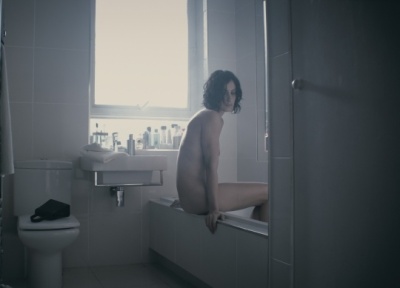
Lipstikka
This arresting revelation of the fallibility of memory—and of the cinematic imagery that depicts it—serves as a focal point in an engrossing tale of friendship and love gone awry. Especially noteworthy are the intense performances not only by Khoury and Attyia, but also Ziv Weiner and Moran Rosenblatt, who portray Lara and Inam as teenagers. In casting the adolescent girls Sagall managed to find two young women who bear an uncanny resemblance to their older “selves.” The status of these young actresses as lookalikes of Khoury and Attyia creates a level of uncertainty (at least in the early flashbacks) about whether the characters of Lara and Inam are actually played by two women or four.
The intense scrutiny with which viewers of Lipstikka scan the faces of the younger versions of Lara and Inam to understand who they “really” are brings to mind the way in which some film theorists have viewed close-ups as cinema’s unique portal to truth. For Béla Balázs close-ups offer inimitable insights into human identity, given that larger-than-life moving images of people’s faces can convey thoughts and feelings that are ineffable. I was reminded of this way of thinking about close-ups during the Berlinale’s retrospective of the films of Ingmar Bergman. “Our work begins with the human face,” Bergman once said. “The possibility of drawing near to the human face is the primary originality and the distinctive quality of the cinema.”
Bergman’s star has faded among cinema connoisseurs, and the elegantly produced volume produced in conjunction with the Berlinale’s retrospective, with its old-fashioned essays on Bergman’s attitudes towards art and religion, does little to counter this judgment. Yet in re-viewing a selection of Bergman’s films at the festival, many of which I had not seen for years, I was impressed with how well they held up. To be sure, the Swedish auteur’s preoccupations are not in tune with the ideological bent that dominates much of cinema scholarship these days. Until recently, Sweden’s immigrant population was negligible, leaving gender as the major political issue to be explored in the era when Bergman was active. Though his films examine questions about gender and sexuality in some depth, his virtual exclusion of homosexuality mark his approach as dated. Nor did Bergman pursue the relation of gender and class with any real commitment. An early film like Summer with Monika (Sommaren med Monika) in 1952/53 takes time to provide a sketch of its heroine’s deplorable living conditions. Jammed into a crowded tenement with an alcoholic father and a gaggle of siblings, she seeks escape through thoughtless hedonism. But after Summer with Monika Bergman largely turned away from sociological concerns, locating most of his subsequent productions in isolated environments and focusing on characters whose problems stem not from political or economic woes but from psychological (and, if you will, spiritual) ones.
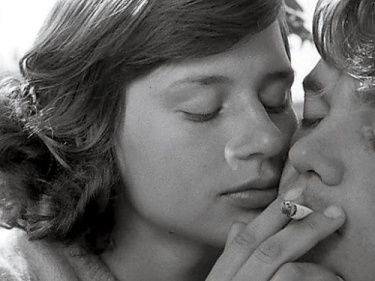
Summer with Monika
Still, one comes away from sampling Bergman’s oeuvre in 2011 with a sense that, in his case at least, the verities found in images of the human face more than make up for whatever else may be missing. The director’s illustrious stock company of actors, including Eva Dahlbeck, Harriet Andersson, Gunner Bjornstad, Ingrid Thulin, Max Von Sydow, Bibi Andersson, Liv Ullmann, and Erland Josephson, repeatedly prove themselves more than up to the challenge of the long close-ups that form the mainstay of Bergman’s technique. For example, during a dinner table scene between Thulin and Ullmann in Cries and Whispers (??Viskningar och rop??,1972), Sven Nikvist’s camera focuses relentlessly on Ullmann’s countenance as she listens to Thulin spew out a string of perverse invectives. The two actresses play sisters, Maria and Karin, unwillingly brought together in the country manor where they grew up by the death of a third sibling. In the dinner table scene Ullmann, as Maria, registers a wide range of emotions from disgust to contempt and even mild amusement. Though these shifting moods are sometimes indecipherable, they open up Maria’s interior life to our gaze.
Balázs is not the only theorist to have analyzed the verities associated with close-ups; Gilles Deleuze has also taken up this cinematic trope. Deleuze, who uses Bergman’s oeuvre as his major example, sees close-ups as significant not because they show truths that images of the human faces can reveal but because they divulge truths about the person who sees them. For Deleuze, watching close-ups is both seductive and terrifying. On one hand, they hold out the hope of connectedness, while on the other they threaten to obliterate the self by mingling your identity with that of another. [1] The latter possibility is laid out in its most extreme form when the faces of Bibi Andersson and Liv Ullmann are fused in the famous close-up that forms the centerpiece of Bergman’s most celebrated film, the 1966 Persona.
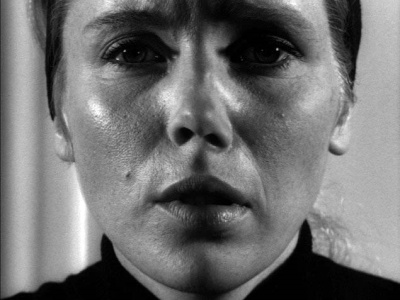
Persona
The other side of Deleuze’s equation came to the fore in two rarely screened Bergman films I saw in Berlin, Waiting Women (Kvinnors väntan, 1952; aka Secrets of Women) and So Close to Life (Nära livet, 1958; aka Brink of Life). Both of these works, like so many of Bergman’s productions, focus on females, the male auteur’s other, and both deal with experiences unique to women. Waiting Women plays out like one of the feminist consciousness-raising sessions that flourished in the 1970s as three bourgeois wives share secrets in an idyllic lakeside villa while awaiting the arrival of their husbands. In a similar vein So Close to Life chronicles the emotional journeys of three women shut up together in a maternity ward. Both films feature credit sequences that unfold over images that signal Bergman’s distance from his female characters. In Waiting Women, a stylized Mannerist oval portrait depicts three Greek maidens. In So Close to Life inchoate shapes move behind a rippled glass window. Though the suffering and joy expressed in the close-ups that dominate these films are palpable, Bergman presents these revelations about women’s inner lives not as authoritative insights but simply as his best guesses about the true nature of femininity.
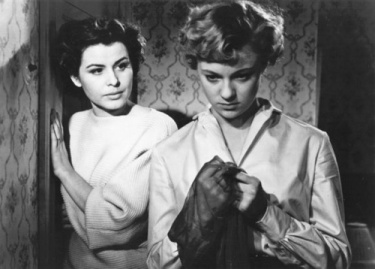
Waiting Women
Out of everything I saw at Berlin, the film that approached the notion of cinematic truth in the most problematic manner was Belá Tarr’s formidable masterwork The Turin Horse (A ??Torinói ló), which deservedly took the festival’s Silver Bear as well as the FIRCESPI prize. Still, if this is indisputably a great film, it is also a mysterious one. Tarr, a revered figure among knowledgeable cinephiles, has spoken at length about his commitment to realism and has also claimed to have a deep interest in people; yet his films offer little evidence of these qualities. They are works of polished craftsmanship, not documentary essays about actual human beings.
The Turin Horse was shot not in northeast Italy, where the action putatively takes place, but in Hungary, where Tarr is based. The isolated hovel in which most of the action occurs was not found but specially built. Powerful wind machines create the winter blast that tears at the characters’ hair and clothing whenever they venture outdoors. Moroever, like most of Tarr’s films, The Turin Horse is shot in black-and-white. In a movie produced in the 21st Century a rejection of color must be regarded as an idiosyncratic stylistic choice rather than an attempt to document events as they actually appear in the world. The striking visual design of A Turin Horse has been skillfully choreographed by cinematographer Fred Kelemen. The film is made up of just thirty-odd moving camera shots, most of which are ostentatiously complicated. Keleman’s elaborate lighting scheme, meticulously modulated within each shot, carefully captures the shifting centers of interest as the camera scans the space. A grinding musical score (by Mihaly Vig; like Keleman, a Tarr regular) and an exaggerated, largely post-synched soundscape similarly draw attention to the artificiality of what we are witnessing. As for the main characters, an aging farmer and his daughter, they are portrayed not by Italian non-professionals but by János Derzai and Erika Bók, Hungarians who are also members of Tarr’s coterie.
The film’s screenplay, co-written by Tarr and another long-standing collaborator Lazlo Krasznahorkai, has affinities with naturalism; but such similarities are only superficial. The story’s focus on a pair of peasants grows out of a concern for the downtrodden that suggests an affinity with naturalist precepts; and, like other naturalist works, the action follows a downward trajectory. But the story (what little there is of it) does nothing to illuminate social ills. It commences in a formal manner with a printed prologue that recounts an anecdote about Friedrich Nietzsche. While living in Turin, Nietzsche left his lodging one morning only to fall sobbing on the neck of a horse that was being beaten by its owner. At this point, the philosopher became catatonic and never recovered. The inscription goes on to state: “We do not know what happened to the horse.” The film then cuts to a Steadicam shot of a horse pulling a cart along a country road at night. This mesmerizing shot, which goes on for several minutes, weaves around the horse and cart in sinuous, dancelike movements. Like the peasants themselves, this horse certainly qualifies as the kind of downtrodden creature favored by naturalist artists, but Tarr’s film does follow its further adventures very far, directing our attention instead to the lives of the father and daughter who own it. But even these figures, pitiable as they are, remain opaque; they are not developed as characters in the way they would be in a more conventionally naturalist work. We mostly view the two peasants from the rear; when frontal views are presented, their faces are often obscured by hoods. When we do see their faces they remain largely impassive, and the two scarcely ever speak.
The Turin Horse is largely concerned with the minutae of everyday life; but unlike neorealist works, the action doesn’t follow a random pattern. Here instead, the ritualized repetition of habitual acts quickly establishes a studied rhythm as the characters dress and undress themselves, eat hot potatoes with their fingers, and get water from the well. Each of the six days that pass is announced with an intertitle. At one point a garrulous neighbor drops in, at another time a band of gypsies intrudes to take water from the well; otherwise the father and daughter remain alone. Eventually, the two attempt to abandon their miserable hut, but some unknown impediment forces them to return.
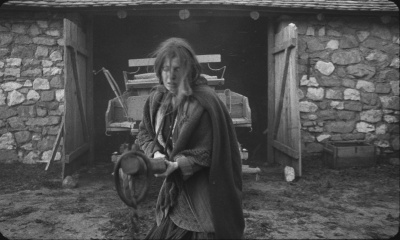
Turin Horse
So where does the truth lie? Critic Robert Koehler has suggested Beckett as a forerunner to Tarr; and the film’s spare mise-en-scene, ritualized repetitions, faux-metaphysical harangues and general aura of entropy and entrapment support this view. [2] But Tarr lacks the playful humor that enlivens absurdist works, not to mention their commitment to brevity; his films are invariably slow, grim, and morose. (The Turin Horse, one of his shorter efforts, runs two hours and thirty minutes.) If one could say that in the world of absurdist theater God is dead and therefore irrelevant, in Tarr’s universe s/he is still in the process of dying and therefore to be mourned.
The Turin Horse is perhaps best read as a retelling of Genesis in reverse, with the six days it chronicles as an unraveling of the creation myth set forth there. The first shot of the farmer driving his horse along a desolate country road represents the last time this man is able to claim dominion over the lone beast he has been exploiting for his livelihood. On the fifth day his well runs dry, and the orderly separation of land and water he has set up ceases to function. On the sixth day, the lights go out. There is a kind of truth in this parable of de-creation, if only of a philosophical sort, and it reflects the preoccupation with spirituality that is a prominent characteristic of the remodernist film movement with which Tarr is often associated. One could also view The Turin Horse as an inverted fable about the process of artistic creation, an appropriate theme for a film the director has claimed will be his last.
Following the heady conundrums posed by The Turin Horse, I was served up with a diverting confection, Unknown, which also claimed a place in the Berlin competition. A high-stakes thriller about mistaken identity and international skullduggery from American producer Joel Silver, Unknown delivers a full share of surprising plot twists and heart-stopping action sequences. But it, too, features truths, though they take less abstruse forms than those that hold sway in Tarr’s recondite work. Director Jaume Collet-Serra claims to be a follower of Alfred Hitchcock, but he manages to sandwich some slices of life in among the film’s Hitchockian slices of cake. Documentary elements and revealing close-ups raise issues about veracity similar to those in the films summarized earlier in this report.
Unknown was shot largely on location in Berlin itself, and though the mise-en-scene emphasizes visitor favorites like Mies van der Rohe’s modern art museum, the iconic Adlon Hotel, and the shopping and cultural Mecca of Friedrichstrasse, these places are not simply tourist traps but vital components of this historic city’s urban fabric. The presence of such locales in the background of many of the film’s major scenes provides a plausible grounding for its fantastical whirlwind of a story. Political realities also come into the picture in the form of a character played by Diane Kruger, an illegal immigrant from Bosnia named Gina.
Though some reviewers found Kruger’s star glamour a poor fit with the role she played, she proves her worth by adding realism to one of the movie’s big action set-pieces. Early in the film Gina drags her passenger (played by Liam Neeson) out of the River Spree when the taxi she’s driving careens off a bridge. During the press conference that followed the Berlin screening, Kruger boasted that she had done some of the rescuing herself, remarking that Neeson’s outsized body posed a daunting test of her limited strength as she struggled to wrench him free of the sinking taxi. Though the scene could have been staged with a stunt double whose work could be patched in by the movie’s editing and special effects team, Kruger’s willingness to put herself on the line ramps up the excitement quotient by persuading us that actual danger to a major star is involved.
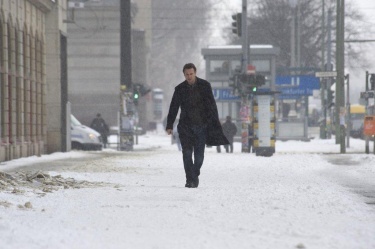
Unknown
The production’s two other stars, Neeson, who plays the film’s hero, botanist Martin Harris, and ??Mad Men??’s January Jones as Harris’s wife Liz, are notable in large part because of the way in which their faces are used. Though we may unthinkingly accept the bland sincerity conveyed by Jones’s classic features and pale coloring in the early scenes as an accurate representation of Liz’s character, this assumption is abruptly overturned when Liz subsequently begins to behave in an unfathomable manner. In these later scenes close-ups of Jones with make-up and lighting subtly altered, recreate Liz as opaque and sinister. Neeson’s countenance, by contrast, can’t be contained within the film’s theme about the deceptive nature of identity. With his round, guileless eyes and wide, generous mouth, Neeson radiates openness and integrity, creating a disconcerting disconnect in the final showdown scene when Harris is revealed as someone who is more complicated and more devious than we had been led to expect. The moment feels false because the honest inner self conveyed by Neeson’s candid face sends so strong a signal that it’s virtually impossible to counteract.
Unknown is not the kind of movie in which one expects truth-telling to come to the fore. But in addition to its documentary ingredients and the issues it confronts having to do with the human face, Silver’s film also includes some historical truths in its portrait of another character, Ernst Jürgen, an ex-Stasi officer played by the distinguished German actor Bruno Ganz. Jürgen’s nostalgic reminiscences about his job in the East German secret police were greeted with suppressed laughter by the mostly German audience at the screening I attended, a response that added yet another touch of authenticity to this mostly frivolous genre piece. At that moment, I became aware of the Berliners who were sitting all around me as astute inheritors of a complicated history.
Unlike other major festivals like Cannes, Sundance and Venice, the Berlinale is held in a major metropolis where local fans mingle with the movie pros from out-of-town. At an event like this one you may find yourself part of an audience for whom a particular film carries deep cultural meanings, as happened to me when I saw Unknown. Such occasions turn movie-going into an unforgettable experience, and even, in a certain way, a truthful one.
Endnotes
1 Deleuze’s own formulation of this issue is somewhat more abstract than the way I have rendered it here. To see Deleuze’s discussion, go to Cinema 1: The Movement-Image, trans. Hugh Tomlinson and Barbara Habberjam (Minneapolis: University of Minnesota Press, 1986: pp. 95-101.
2 Click here for Koehler’s long, thoughtful review of A Turin Horse.

